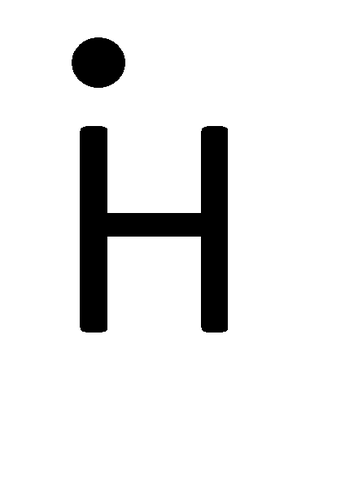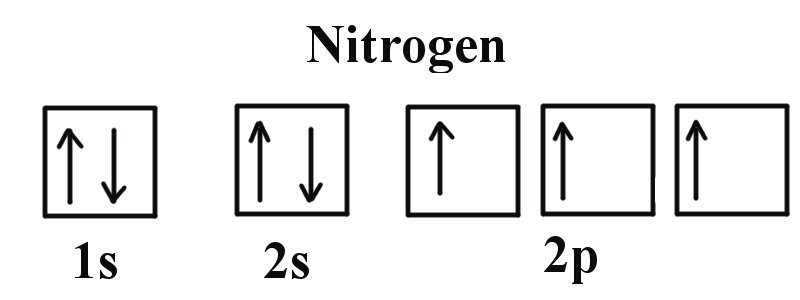What subatomic particle lives in the nucleus and determines the identity of the element?
¿Qué partícula subatómica vive en el núcleo y determina la identidad del elemento?
proton
What is the electron dot diagram for hydrogen?
¿Cuál es el diagrama de puntos de electrones para el hidrógeno?

What Type of Bond has Non-Metal Atoms Sharing Electrons EQUALLY?
¿Qué tipo de enlace tiene átomos no metálicos que comparten electrones por igual?
non-polar covalent
What type of bond will this pair form? Be as specific as possible:
¿Qué tipo de vínculo formará este par? Sea lo más específico posible:
Hydrogen + Hydrogen
non-polar covalent
Which element has 18 protons?
¿Qué elemento tiene 18 protones?
Argon
What subatomic particle determines the stability of the atom's nucleus?
¿Qué partícula subatómica determina la estabilidad del núcleo del átomo?
What is the electron configuration for lithium?
¿Cuál es la configuración electrónica del litio?
1s2 2s1
What Type of Bond has Non-Metal Atoms Sharing Electrons UNEQUALLY?
¿Qué tipo de enlace tiene átomos no metálicos que comparten electrones de manera desigual?
polar covalent bond
What type of bond will this pair form? Be as specific as possible:
¿Qué tipo de vínculo formará este par? Sea lo más específico posible:
Sodium + Chlorine
ionic bond
Which element has 64 protons?
¿Qué elemento tiene 64 protones?
Gadolinium
What is the middle of the atom called?
¿Cómo se llama la mitad del átomo?
nucleus
What is the electron dot diagram for fluorine?
¿Cuál es el diagrama de puntos de electrones para el flúor?

What Type of Bond has a Non-Metal Atom Take electrons from a Metal Atom?
¿Qué tipo de enlace tiene un átomo no metálico que toma electrones de un átomo metálico?
ionic bond
What type of bond will this pair form? Be as specific as possible:
¿Qué tipo de vínculo formará este par? Sea lo más específico posible:
Oxygen + Hydrogen
polar covalent
Which element has 7 valence electrons and 2 electron shells?
¿Qué elemento tiene 7 electrones de valencia y 2 capas de electrones?
Fluorine
What subatomic particle resides in the electron cloud?
¿Qué partícula subatómica reside en la nube de electrones?
electron
What is the electron configuration for carbon?
¿Cuál es la configuración electrónica del carbono?
1s2 2s2 2p2
What Type of Bond has Metal Atoms surrounded by valence electrons ("Sea of Electrons")?
¿Qué tipo de enlace tiene átomos metálicos rodeados por electrones de valencia ("Mar de electrones")
metallic bond
What type of bond will this pair form? Be as specific as possible:
¿Qué tipo de vínculo formará este par? Sea lo más específico posible:
Aluminum + Aluminum
metallic bond
Which element has 2 valence electrons and 4 electron shells?
¿Qué elemento tiene 2 electrones de valencia y 4 capas de electrones?
Calcium
What are the specific sections of the electron cloud called that each hold up to 2 electrons?
orbitals
What is the orbital notation for nitrogen?
¿Cuál es la notación orbital del nitrógeno?

What type of bond results in extremely hard solids that do not dissolve in water, do not conduct electricity, and can only happen between nonmetals OR nonmetals and metalloids?
¿Qué tipo de enlace químico da como resultado sólidos extremadamente duros que no se disuelven en agua, no conducen electricidad y solo pueden ocurrir entre no metales O no metales y metaloides?
network covalent bond
What type of bond will this pair form? Be as specific as possible:
¿Qué tipo de vínculo formará este par? Sea lo más específico posible:
Sulfur + BrominePolar Covalent
Which element is the most electronegative of all the elements?
¿Qué elemento es el más electronegativo de todos los elementos?
Fluorine